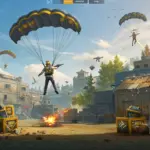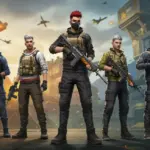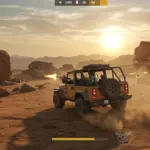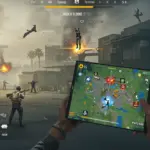Free Fire Survival Secrets: Last Longer in Every Match
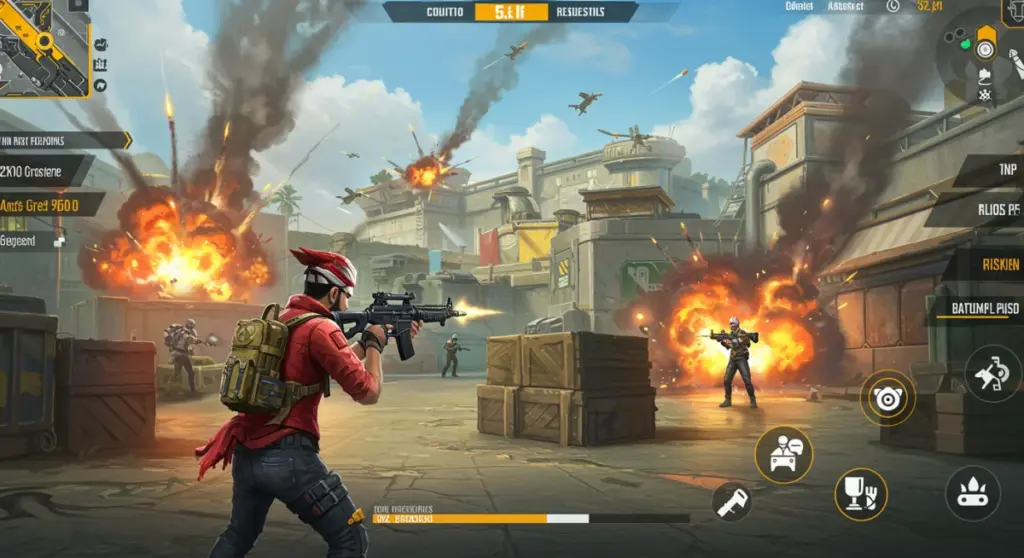
Anúncios
Mastering Free Fire survival secrets is key to consistently outlasting opponents; implement smart positioning, efficient looting, and strategic combat techniques to significantly extend your gameplay and secure more victories.
Are you tired of being eliminated early in Free Fire matches? Do you wish you could consistently outlast your opponents and secure more top placements? Unlocking the right Free Fire Survival Secrets can dramatically improve your gameplay, helping you last 20% longer in every match. This guide will dive deep into advanced strategies, tactical insights, and crucial tips that pro players use to dominate the battlefield, ensuring you not only survive but thrive.
Mastering the Drop: Strategic Landing Zones
The first few seconds of a Free Fire match are arguably the most critical. Your landing spot dictates your early game, influencing everything from loot acquisition to initial engagements. A well-chosen drop zone can set you up for success, while a poor one can lead to an immediate exit from the game.
Understanding the map and its various zones is fundamental. High-tier loot areas often attract many players, leading to intense early skirmishes. While these can offer great rewards, they also carry high risks. For survival, sometimes a slightly less contested area with decent loot is preferable, allowing you to gear up safely before engaging.
Analyzing Hot Drop vs. Safe Drop
Choosing between a hot drop and a safe drop depends on your playstyle and confidence. Hot drops like Peak or Clock Tower offer immediate action and high-tier loot but demand quick reflexes and aggressive play. Safe drops, such as Rim Nam Village or Mars Electric, provide more time to loot and strategize.
- Hot Drops: High risk, high reward. Ideal for players confident in early combat.
- Safe Drops: Low risk, moderate reward. Perfect for players who prefer a slower start and strategic buildup.
- Hybrid Drops: Landing near a hot zone but slightly off-center, allowing you to observe and engage opportunistically.
Optimal Parachuting Techniques
Once you’ve selected your landing spot, the actual parachuting technique matters. Dive steeply to reach your destination faster, or glide horizontally to cover more distance. Practice makes perfect in mastering the parachute controls to land precisely where you intend, ideally on a weapon or armor piece.
Remember to keep an eye on other players during your descent. Knowing where enemies are landing nearby gives you a crucial advantage, allowing you to either avoid them or prepare for an immediate confrontation. Landing near a vehicle can also provide a quick escape or rotation option.
In conclusion, your initial landing choice and execution lay the groundwork for your entire match. Prioritize understanding the map, assessing risk, and mastering your parachute to ensure a strong start and significantly boost your chances of survival.
Efficient Looting and Resource Management
After a successful landing, efficient looting is paramount. Gathering the right resources quickly and effectively can determine your combat readiness and overall longevity in Free Fire. It’s not just about collecting everything you see, but prioritizing essential items.
Your inventory space is limited, so every item you pick up should serve a purpose. Focus on acquiring a balanced loadout, including a close-range weapon, a long-range weapon, sufficient ammunition, healing items, and utility gadgets like gloo walls or grenades. Avoid hoarding unnecessary items that clutter your backpack.
Prioritizing Essential Gear
The hierarchy of loot is crucial for survival. Always prioritize weapons, armor (vest and helmet), and healing items. Without these, you’re at a severe disadvantage in any engagement.
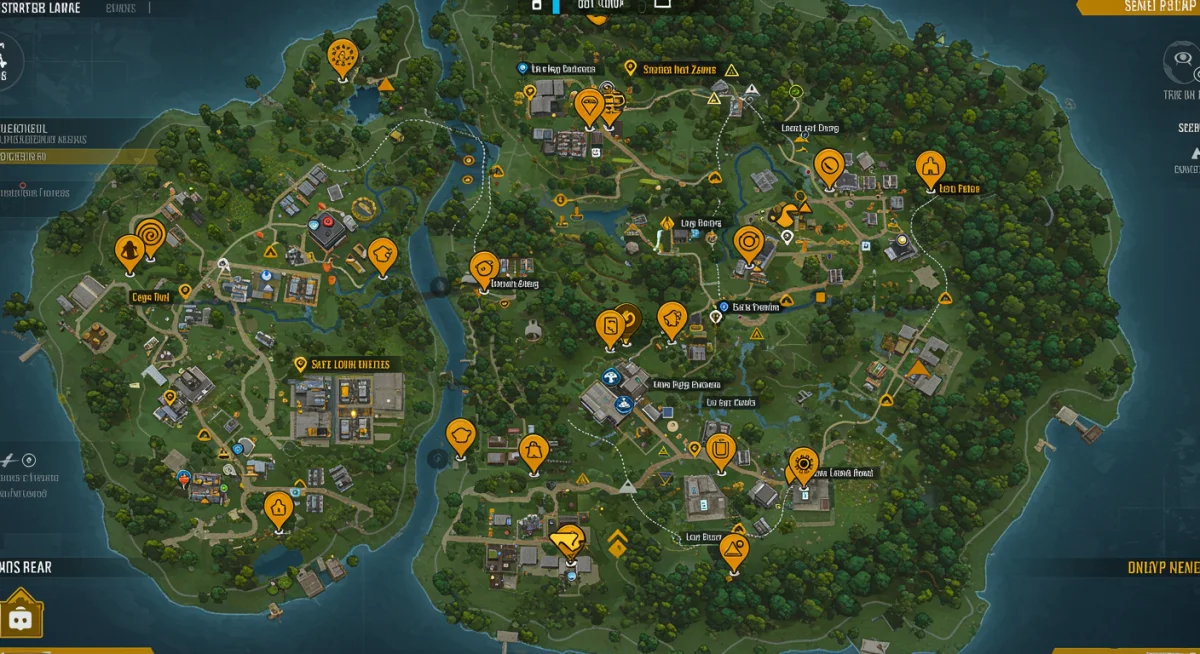
When looting, consider the following:
- Weapons: Secure at least one primary and one secondary weapon quickly. Aim for versatile options.
- Armor: Level 2 or 3 vests and helmets offer significant damage reduction. Upgrade whenever possible.
- Healing: Med Kits and Inhalers are vital. Carry a good mix to sustain yourself in fights and after zone damage.
- Ammunition: Only pick up ammo for the weapons you currently have. Over-collecting ammo for unused weapons wastes space.
Strategic Use of Backpack Space
Managing your backpack effectively means making tough decisions. As the game progresses, you might need to drop lower-level items for higher-tier ones or exchange less useful consumables for more healing or utility. Always keep an eye on the shrinking safe zone and plan your looting routes accordingly.
Don’t linger too long in one spot looting. The longer you stay, the higher the chance of encountering enemies or being caught outside the safe zone. Loot quickly, move to a new location, or rotate towards the next safe zone. Remember, movement is key to survival, and efficient looting facilitates that movement without unnecessary delays.
Ultimately, smart looting and resource management ensure you are always prepared for what Free Fire throws at you. By prioritizing essential gear and managing your inventory wisely, you enhance your combat effectiveness and increase your chances of lasting longer.
Positional Play and Zone Awareness
Understanding and utilizing positional play is a cornerstone of advanced Free Fire strategy. It’s not just about shooting; it’s about putting yourself in the best possible location to gain an advantage over your opponents and avoid unnecessary fights. Zone awareness goes hand-in-hand with this, as the shrinking play zone constantly forces players into new positions.
Always aim to be on the edge of the safe zone, or even better, slightly inside it, giving you time to react to the zone’s movement and observe incoming players. Avoid being caught in the open or being forced to run through the zone, as this leaves you vulnerable to attacks from all sides.
High Ground Advantage and Cover Utilization
Securing high ground offers a significant tactical advantage. From elevated positions, you can spot enemies more easily, have better angles for shooting, and are generally harder to hit. Always look for opportunities to gain height, whether it’s a building, a hill, or even a vehicle.
- High Ground: Offers superior vision and firing angles.
- Cover: Use natural cover (rocks, trees) and artificial cover (buildings, gloo walls) to protect yourself from incoming fire.
- Flanking: Utilize terrain to move stealthily and flank unsuspecting enemies, catching them off guard.
Anticipating Zone Shifts and Rotations
Successful players don’t just react to the zone; they anticipate its movements. Pay attention to the timer and the direction of the previous zones to predict where the next safe zone might shrink. This allows you to plan your rotations early, avoiding frantic rushes and potential ambushes.
When rotating, use cover and avoid open fields. Vehicles can be useful for fast rotations but also draw attention. Consider the path of least resistance and maximum cover. A well-executed rotation can save your life and put you in a prime position for the endgame.
In essence, mastering positional play and zone awareness means always thinking ahead. By securing advantageous positions and anticipating the zone’s movements, you minimize risks and maximize your opportunities for survival and engagement.
Combat Mechanics and Engagement Strategies
While survival is key, eventually you will need to engage in combat. Understanding Free Fire’s combat mechanics and employing effective engagement strategies are critical for winning fights and extending your time in the match. It’s not just about aiming; it’s about timing, movement, and tactical decision-making.
Every weapon in Free Fire has its strengths and weaknesses. Familiarize yourself with recoil patterns, damage output, and effective ranges. Practice with different weapons to find those that suit your playstyle and allow you to perform consistently in various combat scenarios.
Effective Aiming and Recoil Control
Accurate aiming is fundamental. Utilize the game’s settings to find your optimal sensitivity. Practice headshots, as they deal significantly more damage. Recoil control is equally important, especially with automatic weapons. Learn to drag your finger down slightly as you fire to keep your shots on target.
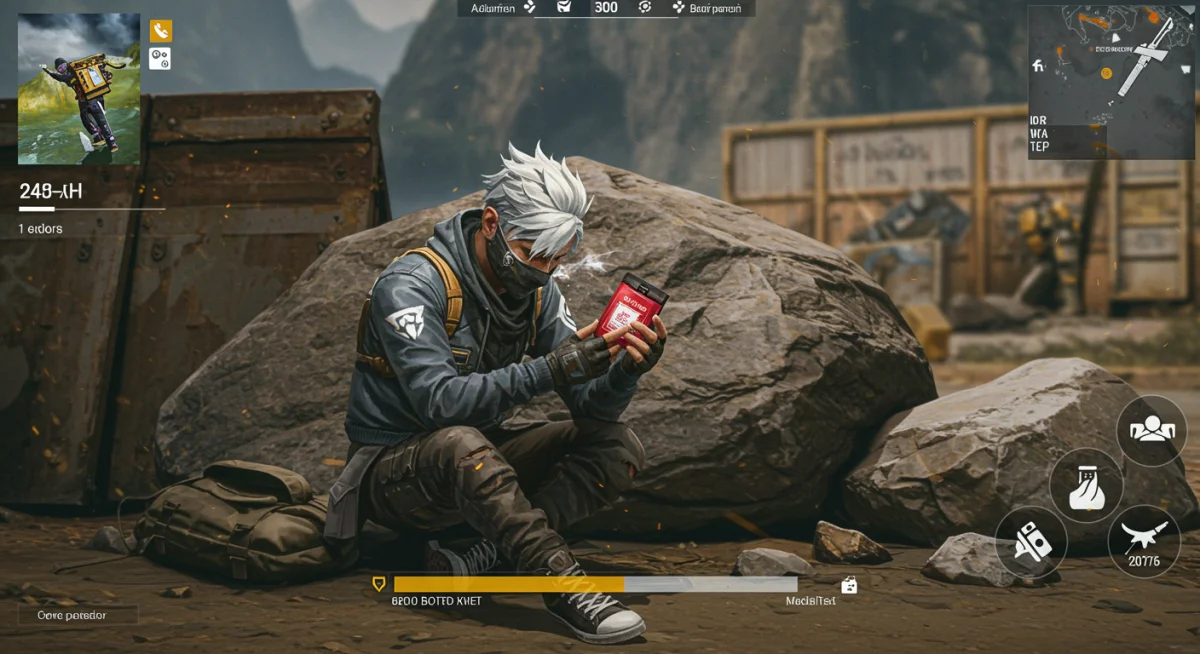
When engaging, consider using:
- Peek and Shoot: Briefly expose yourself to fire, then quickly retreat to cover.
- Crouch and Shoot: Can reduce your hitbox and improve accuracy.
- Drop Shot: Go prone while shooting to make yourself a harder target.
Strategic Engagements and Disengagements
Not every fight needs to be taken. Sometimes, the best strategy is to avoid combat if you are at a disadvantage or if it compromises your position. Learn when to engage and, more importantly, when to disengage. If a fight isn’t going your way, use gloo walls or smoke grenades to create cover and retreat to a safer location.
When you do engage, try to isolate enemies or catch them off guard. Focus fire on one opponent if you are in a team. Utilize grenades to flush enemies out of cover or create chaos. Always have an escape plan, even when initiating a fight. Being able to retreat and re-engage from a better position is a hallmark of skilled players.
By mastering combat mechanics and employing smart engagement strategies, you transform from a reactive player into a proactive one, capable of winning more fights and securing your survival in Free Fire.
Teamwork and Communication (for Squad/Duo Modes)
While many of these strategies apply to solo play, teamwork and effective communication are absolutely vital when playing in duo or squad modes. A well-coordinated team can easily overcome individual skill deficits, significantly increasing your chances of survival and victory. Poor communication, on the other hand, often leads to chaos and early elimination.
Establishing clear roles within your team can streamline decision-making. Designate a shot-caller, a scout, a support player, and an aggressor. While roles can be fluid, having a primary responsibility helps everyone understand their contribution to the team’s overall strategy.
Effective Callouts and Information Sharing
Clear and concise communication is paramount. Use specific callouts for enemy locations (e.g., “Enemy at 270, behind the red truck”), loot locations, and zone movements. Avoid vague descriptions or unnecessary chatter that can distract your teammates.
- Enemy Pings: Use the ping system to mark enemy locations accurately.
- Loot Requests: Communicate what you need (e.g., “Need AR ammo,” “Need med kits”).
- Zone Updates: Remind teammates about the shrinking zone and plan rotations together.
Coordinated Pushes and Revives
A coordinated push can overwhelm an enemy squad. Move together, focusing fire on a single target. Avoid pushing individually, as this often leads to being outnumbered and eliminated. Similarly, when a teammate is downed, prioritize their revive if it’s safe to do so. Use gloo walls to create cover for revives.
Always protect your downed teammates. A successful revive can turn the tide of a fight. Conversely, if you are downed, communicate your position and any enemy movements to your teammates. Effective teamwork in Free Fire is a constant dance of communication, coordination, and mutual support, all aimed at extending the team’s survival.
In summary, for duo and squad modes, teamwork is not merely an advantage; it’s a necessity. By communicating effectively, coordinating actions, and supporting each other, your team can navigate the battlefield more successfully and increase your collective survival rate.
Adaptability and Learning from Mistakes
No strategy is foolproof, and every Free Fire match presents unique challenges. The ability to adapt to changing circumstances and, crucially, to learn from your mistakes, is what separates good players from truly great ones. Sticking rigidly to a plan when the situation demands flexibility can be a recipe for disaster.
After each match, regardless of the outcome, take a moment to reflect. What went well? What went wrong? Why were you eliminated? Analyzing your gameplay helps identify weaknesses and areas for improvement, turning every defeat into a valuable learning experience.
In-Game Adaptations
The battlefield is dynamic. The safe zone might shrink in an unexpected direction, or an enemy squad might ambush you. Be prepared to change your plans on the fly. If your initial drop zone is too contested, pivot to a safer area. If you’re low on health and ammo, avoid direct engagements and focus on finding resources.
- Flexibility: Don’t be afraid to abandon a plan if it’s no longer viable.
- Situational Awareness: Constantly assess the map, enemy positions, and your resources.
- Quick Decisions: Make rapid, informed decisions under pressure.
Post-Match Analysis and Practice
Reviewing your gameplay, either through recorded footage or simply by mentally replaying key moments, is a powerful tool for improvement. Identify recurring errors, such as poor positioning, rushed engagements, or ineffective looting. Then, actively work on those aspects in subsequent matches.
Practice specific skills in training mode or casual matches. Improve your aim, master gloo wall placement, or experiment with different weapon combinations. Continuous learning and adaptation are essential for long-term survival and success in Free Fire. Every match is an opportunity to refine your skills and extend your survival time.
Ultimately, your journey to becoming a Free Fire survival expert is ongoing. By embracing adaptability and diligently learning from every experience, you will continually improve your game, ensuring you last longer and perform better in every single match.
| Key Survival Area | Brief Description |
|---|---|
| Strategic Landing | Choose safe or hybrid drop zones to secure early loot without high risk. |
| Efficient Looting | Prioritize weapons, armor, and healing; manage backpack space wisely. |
| Positional Play | Utilize high ground and cover, anticipate zone shifts for optimal positioning. |
| Combat & Adaptation | Master aiming, know when to engage/disengage, and learn from every match. |
Frequently Asked Questions About Free Fire Survival
For beginners, the most crucial secret is strategic landing. Avoid hot drop zones initially to give yourself time to loot and understand the game mechanics without immediate pressure. Focus on acquiring basic gear and staying within the safe zone’s edge to observe enemy movements.
To improve looting efficiency, prioritize essential items like weapons, armor, and healing supplies. Avoid picking up unnecessary items that clutter your backpack. Learn common loot spawns and develop a quick looting routine to minimize time spent stationary and exposed.
Late-game survival hinges on positional awareness and patience. Secure high ground, utilize all available cover, and anticipate the final zone shifts. Avoid unnecessary engagements and save utility items like gloo walls for crucial moments. Play the edges of the zone, not the center.
Team communication is vital for squad survival. Clear callouts for enemy locations, loot, and zone movements help coordinate actions. Effective communication enables synchronized pushes, safe revives, and strategic rotations, minimizing risks and maximizing collective strength.
Beyond tactics, adaptability and learning from mistakes are key. Analyze your gameplay after each match to identify areas for improvement. Practice specific skills, adapt your strategy to changing scenarios, and maintain a flexible mindset to continuously enhance your survival rate.
Conclusion: Elevating Your Free Fire Game
Mastering Free Fire Survival Secrets is an ongoing journey that combines strategic planning, quick decision-making, and continuous learning. By meticulously applying the techniques discussed—from precise landing and efficient looting to astute positional play, refined combat mechanics, effective teamwork, and crucial adaptability—you’re not just playing; you’re evolving. Each match becomes an opportunity to implement these insights, allowing you to consistently outlast opponents and significantly increase your time on the battlefield. Embrace these strategies, analyze your gameplay, and watch as your Free Fire survival rate undeniably climbs, making you a formidable presence in every match.
